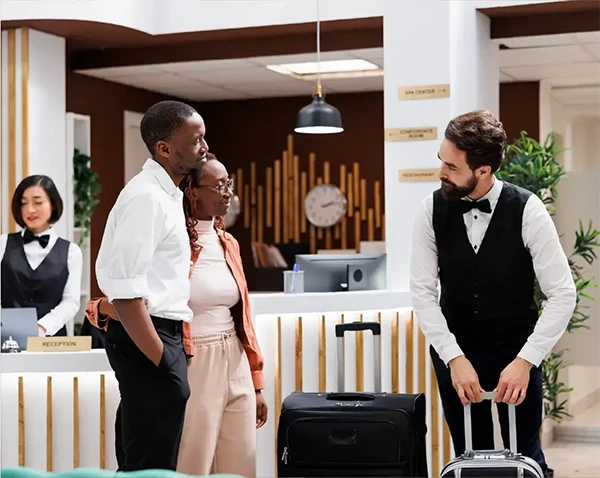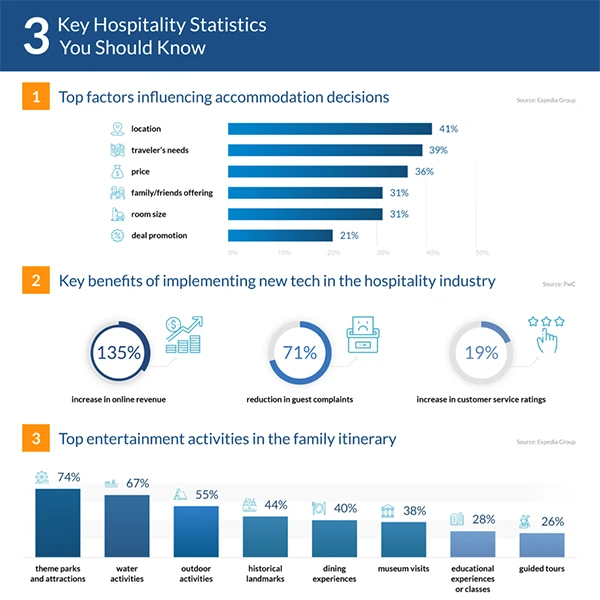
Global Hotel Chains are one of the most successful business sectors. They generate greater revenue and if you can win over your customer’s hearts you might get lifetime loyalty of theirs.
When I travel to a different country or state, I have certain expectations from the hotels there, and one of them is that they make me feel at home. Even tho, Bill Kreutzamnn once said, “No matter how nice the hotel is, it’s not home.” But that doesn’t change the fact that we want to feel welcomed.
So, how can a global hospitality chain elevate guest experience? The key to increasing the experience of their guests is creative translation. It is not only limited to speaking in the native language of your guests, more things need to be incorporated.
In this article, I will talk about how creative translation elevates guest experience in global hotel chains. This could help you in a lot of ways if you are a hotel owner or thinking about opening one in the future. So, keep reading.

The Power of Language in Hospitality
Language is not just a way to communicate, it’s a significant part of any culture, and it’s a way to create trust between two parties. International hotel chains need to incorporate talking to guests in their native language.
This way, the guests will be able to understand you better, and will also make them feel more welcome. But again, is talking in their native language sufficient? No, it’s not a luxury property, owners and managers have to pay attention to every detail.
From customized menus to little details in the room of the guests, every minute detail needs to be taken care of. Below, we are mentioning 5 ways in which hotel chains can increase their customer experience with the help of creative translation.
1. Localizing Guest Communications: A Personalized Approach

If I’m traveling to a foreign country, I would very much like it if I was greeted in my native language. Your first impression matters the most, so when you are attending to any international guest, start with a polite greeting in their native language.
An American tourist would love to have an English breakfast menu if they are traveling to other places like Asia or Europe. Adding their comfort food and drinks might look like a small thing, but it leaves a huge impact.
You can use an Australian transcreation services expert to create a custom-made experience for all the guests. These translation services can make things easier while communicating and are a must for all hotels.
2. Consistent Brand Voice Across Regions
Every hotel needs to stick to its motives and morals. Consistency is important, but being flexible and adapting to yourself according to a different region and culture is also crucial.
Creative translation makes this possible, as it maintains the goals of the hotels while also taking care of all the language and cultural needs of the guests. This balance maintains the solidity of a hotel.
3. Enhancing Digital and In-Person Interactions
Every customer doesn’t directly come to the door of a hotel, it starts from the online sites and apps. Digitalization has taken over everything, and that’s why people now book lodgings online.
Your hotel site or app needs to be user-friendly along with opinions like changing the language for the whole interface, which would give off a good experience if you care about your guest’s comfort.
Another thing is, that confirming emails or calls also needs to be in the native language of the customer so that they won’t have trouble understanding anything.
4. Meeting Cultural Expectations and Preferences
Every culture is different, and every customer has different expectations when it comes to hospitality. Creative translation comes in handy here, as it will tell you exactly the way you are supposed to communicate with the person in front of you.
Japanese people look for a more polite approach, while Americans prefer a professional yet casual tone. Creative Translation takes care of all these expectations and needs. The same thing goes for the in-room experience.
Creative translation will take care of everything for you. More hospitality factors play a vital role in enhancing your client experience, and you can see other factors in the graph below.

5. Building Long-Term Loyalty Through Cultural Sensitivity
If the hotel makes me feel valued and comfortable it is going to see me again and that’s valid, right? They took good care of me and made me feel at home, so why wouldn’t I come back to them? And I will spread good words around about the stay which will make more people go there to stay.
This is what cultural sensitivity can do if your clients are satisfied with your service. You’re gaining a lifelong customer who will spread good word about your business and will always come to you. Creative translation is the key to providing such an experience.
DID YOU KNOW?
There are only 340 5-star hotels around the world, and the hotel industry is valued at $1.5 trillion!
Conclusion
If you want your international hotel chain business to reach new heights and create a superior image in comparison to your competitors, then you have to pay attention to the guest experience. A happy and satisfied customer makes a huge difference.
Creative translation will help you in a lot of ways and will be the key to a smoother experience and removing the language barrier. It needs to be incorporated properly and might take a bit of time to get used to it, but once you do, things will change for good.






